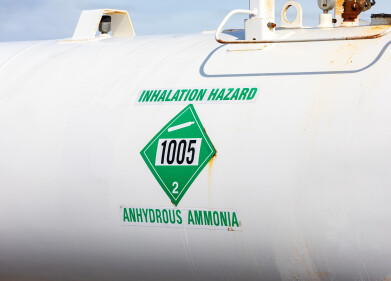Fuel for thought
US sees precipitous decline in natural gas rigs, says new report
Mar 29 2024
In a significant development impacting the United States energy sector, the operational count of natural gas drilling rigs has sharply declined, reaching its lowest point since early 2022. This downturn, as reported by the renowned energy services company Baker Hughes, marks a pivotal moment in the trajectory of U.S. energy production.
As of late March 2023, the aggregate count of both oil and gas drilling rigs—an essential predictor of forthcoming production levels—witnessed a reduction of five units, settling at 624. This figure not only represents a decrease of 134 rigs, or 18%, compared to the same period in the previous year but also underscores the fluctuating dynamics within the energy sector. Specifically, the count of oil-specific rigs slightly dropped by one to 509, while gas rigs saw a more pronounced decrease, falling by four to a total of 112. This latter figure is notably the lowest recorded since mid-January 2022, with the majority of these reductions occurring in the Haynesville shale gas field that stretches across Louisiana, Texas, and Arkansas.
The oil and gas rig count has experienced a roughly 20% decrease throughout 2023, following a significant increase in the preceding years. This decline can be attributed to a combination of factors including a dip in oil and gas prices, elevated labour and equipment costs due to rampant inflation, and a strategic shift among companies towards debt reduction and enhancing shareholder returns rather than expanding output.
Despite the downtrend in rig counts, U.S. oil futures have shown resilience, marking an approximate 12% increase in 2024 after a decline of 11% in the preceding year. Conversely, gas futures have continued their descent, dropping around 34% in 2024 following a 44% plunge in 2023.
This shift comes amidst expectations of an uptick in oil production from premier shale regions, projected to hit a four-month high in April, as per the U.S. Energy Information Administration (EIA). However, total gas output from major shale basins is anticipated to dip to a three-month low, reflecting a cutback in spending and drilling activities by producers in reaction to the significant fall in gas futures observed in February.
The EIA reports an active February with 862 oil and gas wells drilled and 865 completed, marking the highest activity since December 2023. Yet, the total of drilled but uncompleted wells (DUCs) slightly decreased, indicating a possible shift towards completing existing projects amidst the changing economic landscape.
Looking ahead, U.S. oil production is projected to reach new record highs in 2024 and 2025, driven by rising prices, efficiency improvements, and the completion of existing DUCs. In contrast, U.S. gas production is expected to see a downturn from its peak in the previous year.
This nuanced picture of the U.S. energy sector's drilling activity, highlighted by Baker Hughes' reports, underscores the complex interplay between market forces, strategic corporate decisions, and the broader economic environment. As the industry continues to navigate these challenges, the rig count serves as a crucial barometer for assessing the health and direction of U.S. energy production.
Digital Edition
PIN 25.5 Oct/Nov 2024
November 2024
Analytical Instrumentation - Picturing Viscosity – How Can a Viscometer or a Rheometer Benefit You? - Sustainable Grease Formulations: Evaluating Key Performance Parameters and Testing Method...
View all digital editions
Events
Jan 20 2025 San Diego, CA, USA
Jan 22 2025 Tokyo, Japan
Jan 25 2025 San Diego, CA, USA
SPE Hydraulic Fracturing Technology Conference and Exhibition
Feb 04 2025 The Woodlands, TX, USA
Feb 05 2025 Guangzhou, China



















